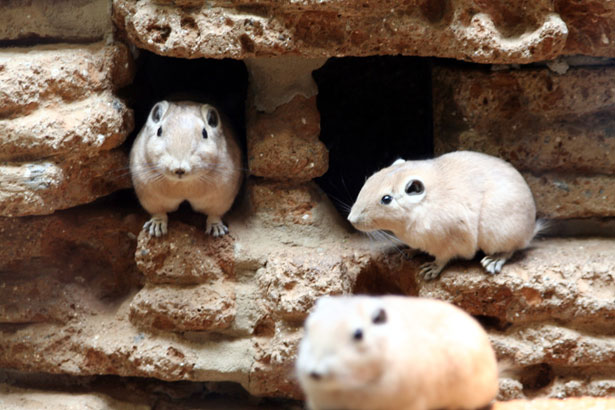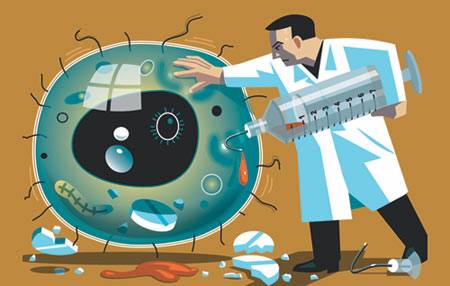Quite a few papers relevant to Blastocystis research have made it to PubMed over the past month! Therefore, the August version of 'This Month in Blastocystis Research' is more like a list of papers + short descriptions/comments, rather than one or two actual paper reviews.
Dr Aldert Bart and his Dutch colleagues have published a study that confirms data emerging from other parts of Europe. Using microscopy (fixed faecal smears) and PCR, they found an almost 40% prevalence of Blastocystis in returning travelers with symptoms, and a prevalence of 18% in patients referred for other reasons. The distribution of subtypes found in the study population was quite similar to what has been found elsewhere in Europe with ST3 predominating (42%) and the rest of the subtypes attributable to ST1 (22%), ST2 (22%), ST4 (12%), ST6 (1%) and ST7 (1%).
The Tropical Parasitology theme issue on Blastocystis has now gone live. You’ll
find a link to the editorial and the three papers included in the symposium here.
In my previous post I referred to a new study from Colombia which includes subtyping of Blastocystis isolates from humans, and a variety of animals, including birds. The paper is interesting for a number of reasons, but first and foremost it confirms the virtual absence of ST4 in humans in S America. Moreover, the study included 70 Blastocystis positive samples from asymptomatic carriers, 40 positive samples from patients with diarrhoea, and 15 positive samples form patients with IBS. Remarkably, all samples from healthy carriers were typed as ST1, those from patients with diarrhoea belonged to ST2, and those from IBS patients to ST3. Such a clear-cut distribution of subtypes across cohorts is unprecedented and of course warrants confirmation and further investigation. In Europe, ST4 is very common in humans, while it appears rare in humans in many other parts of the world. ST4 also appears rare among non-human primates (NHPs), our closest living relatives, and while NPHs and humans otherwise tend to share the same major subtypes (ST1, ST2, and ST3), this suggests that while subtypes 1, 2 and 3 have probably co-evolved with primates, ST4 has only recently entered the primate population with a preference for humans! I have hinted at this many times by now, but I find it extremely interesting which is why I keep repeating it.
There is a paper out by Santos and Rivera from the Philippines comparing microscopy of direct faecal smear with culture and PCR for detection of Blastocystis. They ended up concluding that culture was the best diagnostic modality, but it should be noted that the PCR used in the study targets a 1.8 kbp product (complete SSU rRNA gene!), and much smaller products are usually targeted in diagnostic PCR assays. The Blastocystis real-time PCR developed by me and my colleagues targets a sequence stretch of ~120 bp, securing optimum test sensitivity. The results of the Philippine study should be interpreted with this in mind.
Li et al., have published data on experimental infection of ST1 in Sprague-Dawley rats. Animals belonging to this species appeared susceptible to a ST1 strain isolated from a diarrhoeic patient that had been kept in culture and for which induction of cysts had been performed with a view to infecting the rats. The study confirms that Blastocystis is mainly a parasite of the coecum and colon. The authors found evidence of Blastocystis invasion into the lamina propria in one of the animals, and signs of inflammation in all animals challenged. While it is great to see that experimental models can be sustained and that encystation can be induced in vitro, at least two important factors must be kept in mind to fully comprehend the study: Although cysts were isolated by gradient centrifugation prior to inoculation, it is unlikely that all bacteria have been removed from cyst suspensions; in other words, the cyst preparation is not likely to be 'sterile', and any effect of the potentially accompanying bacterial flora is difficult to determine. Moreover, rats may not be natural hosts of ST1 (very few data available on the topic!), and so, the pathology caused in the rats may be an unlikely finding in humans, who are indeed natural hosts of ST1 and may have developed a high degree of tolerance to this subtype.
When visiting Australia earlier this month, I had the pleasure of meeting Wenqi Wang and Tawin Inpankaew, both PhD students working at School of Veterinary Science, The University of Queensland Gatton Campus and supervised by Dr Rebecca Traub. One of the foci of this group is to study Blastocystis in animals, for instance in households where animals are kept as pets. Recently, a paper emerged from this group on diversity of Blastocystis subtypes in dogs in different geographical settings, hence domestic/pound dogs from Brisbane, Australia, semi-domesticated dogs from a village in Cambodia, and stray dogs from Mumbai and other Indian cities. Using sensitive PCR methods they observed that almost one fourth of the Indian dogs were infected, while dogs in the Cambodian village and in Queensland remained largely uninfected. Coprophagy and access to Blastocystis-positive stool from different hosts may account for the relatively high prevalence in stray dogs in India, although one might assume that the prevalence would then be even much higher? The team used nested PCR in their study and found four different subtypes in the Indian dogs, including ST1, ST4, ST5 and ST6. Whether all of their data collectively indicate that dogs are not natural hosts of Blastocystis is a matter of debate and remains to be more thoroughly investigated. Indeed, prevalence and subtype data from studies of samples from wild life canids (dingos, jackals, wolves, coyotes, but also foxes and raccoon dogs) would shed further light on this topic.
Finally, for those interested in how Blastocystis deals with oxidative stress and related metabolic issues, there is a paper out on iron-sulphur cluster biogenesis in protozoan parasites by Ali and Nozaki citing works by Tsaousis (2012), Denoeud (2011), Long (2011), and Stechmann (2008).
Literature:
Ali V, & Nozaki T (2013). Iron-sulphur clusters, their biosynthesis, and biological functions in protozoan parasites. Advances in Parasitology, 83, 1-92 PMID: 23876871
Bart A, Wentink-Bonnema EM, Gilis H, Verhaar N, Wassenaar CJ, van Vugt M, Goorhuis A, van Gool T. Diagnosis and subtype analysis of Blastocystis sp. in patients in a hospital setting in the Netherlands. BMC Infectious Diseases, 13:289.
Li J, Deng T, Li X, Cao G, Li X, & Yan Y (2013). A rat model to study Blastocytis subtype 1 infections. Parasitology Research PMID: 23892480 DOI: 10.1007/s00436-013-3536-7Dr Aldert Bart and his Dutch colleagues have published a study that confirms data emerging from other parts of Europe. Using microscopy (fixed faecal smears) and PCR, they found an almost 40% prevalence of Blastocystis in returning travelers with symptoms, and a prevalence of 18% in patients referred for other reasons. The distribution of subtypes found in the study population was quite similar to what has been found elsewhere in Europe with ST3 predominating (42%) and the rest of the subtypes attributable to ST1 (22%), ST2 (22%), ST4 (12%), ST6 (1%) and ST7 (1%).
In my previous post I referred to a new study from Colombia which includes subtyping of Blastocystis isolates from humans, and a variety of animals, including birds. The paper is interesting for a number of reasons, but first and foremost it confirms the virtual absence of ST4 in humans in S America. Moreover, the study included 70 Blastocystis positive samples from asymptomatic carriers, 40 positive samples from patients with diarrhoea, and 15 positive samples form patients with IBS. Remarkably, all samples from healthy carriers were typed as ST1, those from patients with diarrhoea belonged to ST2, and those from IBS patients to ST3. Such a clear-cut distribution of subtypes across cohorts is unprecedented and of course warrants confirmation and further investigation. In Europe, ST4 is very common in humans, while it appears rare in humans in many other parts of the world. ST4 also appears rare among non-human primates (NHPs), our closest living relatives, and while NPHs and humans otherwise tend to share the same major subtypes (ST1, ST2, and ST3), this suggests that while subtypes 1, 2 and 3 have probably co-evolved with primates, ST4 has only recently entered the primate population with a preference for humans! I have hinted at this many times by now, but I find it extremely interesting which is why I keep repeating it.
There is a paper out by Santos and Rivera from the Philippines comparing microscopy of direct faecal smear with culture and PCR for detection of Blastocystis. They ended up concluding that culture was the best diagnostic modality, but it should be noted that the PCR used in the study targets a 1.8 kbp product (complete SSU rRNA gene!), and much smaller products are usually targeted in diagnostic PCR assays. The Blastocystis real-time PCR developed by me and my colleagues targets a sequence stretch of ~120 bp, securing optimum test sensitivity. The results of the Philippine study should be interpreted with this in mind.
Li et al., have published data on experimental infection of ST1 in Sprague-Dawley rats. Animals belonging to this species appeared susceptible to a ST1 strain isolated from a diarrhoeic patient that had been kept in culture and for which induction of cysts had been performed with a view to infecting the rats. The study confirms that Blastocystis is mainly a parasite of the coecum and colon. The authors found evidence of Blastocystis invasion into the lamina propria in one of the animals, and signs of inflammation in all animals challenged. While it is great to see that experimental models can be sustained and that encystation can be induced in vitro, at least two important factors must be kept in mind to fully comprehend the study: Although cysts were isolated by gradient centrifugation prior to inoculation, it is unlikely that all bacteria have been removed from cyst suspensions; in other words, the cyst preparation is not likely to be 'sterile', and any effect of the potentially accompanying bacterial flora is difficult to determine. Moreover, rats may not be natural hosts of ST1 (very few data available on the topic!), and so, the pathology caused in the rats may be an unlikely finding in humans, who are indeed natural hosts of ST1 and may have developed a high degree of tolerance to this subtype.
 |
| Are dogs, wolves, and other canids natural hosts of Blastocystis? |
Finally, for those interested in how Blastocystis deals with oxidative stress and related metabolic issues, there is a paper out on iron-sulphur cluster biogenesis in protozoan parasites by Ali and Nozaki citing works by Tsaousis (2012), Denoeud (2011), Long (2011), and Stechmann (2008).
Literature:
Ali V, & Nozaki T (2013). Iron-sulphur clusters, their biosynthesis, and biological functions in protozoan parasites. Advances in Parasitology, 83, 1-92 PMID: 23876871
Bart A, Wentink-Bonnema EM, Gilis H, Verhaar N, Wassenaar CJ, van Vugt M, Goorhuis A, van Gool T. Diagnosis and subtype analysis of Blastocystis sp. in patients in a hospital setting in the Netherlands. BMC Infectious Diseases, 13:289.
Parija SC (2013). Blastocystis: Status of its pathogenicity. Tropical Parasitology, 3 (1) PMID: 23961433
Parija SC, & Jeremiah S (2013). Blastocystis: Taxonomy, biology and virulence. Tropical Parasitology, 3 (1), 17-25 PMID: 23961437
Ramírez JD, Sánchez LV, Bautista DC, Corredor AF, Flórez AC, & Stensvold CR (2013). Blastocystis subtypes detected in humans and animals from Colombia. Infection, Genetics and Evolution : Journal of Molecular Epidemiology and Evolutionary Genetics in Infectious Diseases PMID: 23886615
Sekar U, & Shanthi M (2013). Blastocystis: Consensus of treatment and controversies. Tropical Parasitology, 3 (1), 35-9 PMID: 23961439
Stensvold CR (2013). Blastocystis: Genetic diversity and molecular methods for diagnosis and epidemiology. Tropical Parasitology, 3 (1), 26-34 PMID: 23961438
Wang W, Cuttell L, Bielefeldt-Ohmann H, Inpankaew T, Owen H, & Traub RJ (2013). Diversity of Blastocystis subtypes in dogs in different geographical settings. Parasites & Vectors, 6 PMID: 23883734






.jpg/800px-Lagothrix_lagotricha_(walking).jpg)
_jumping.jpg)

